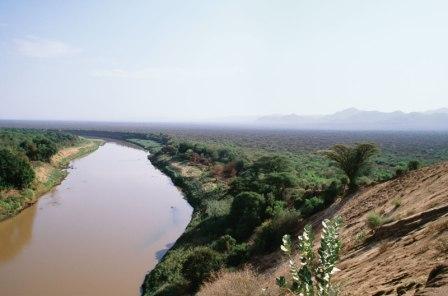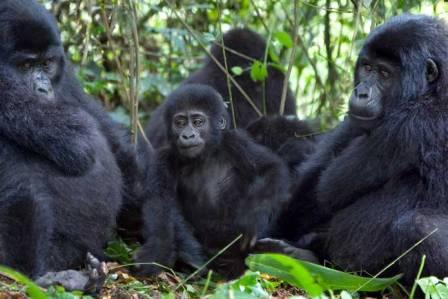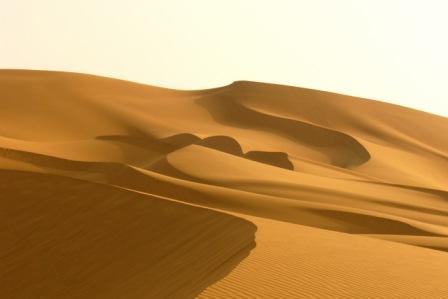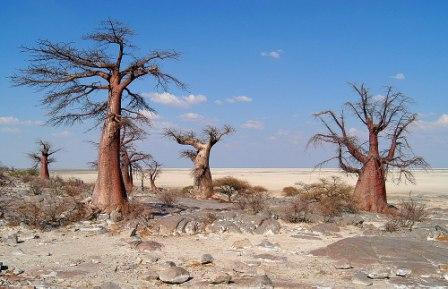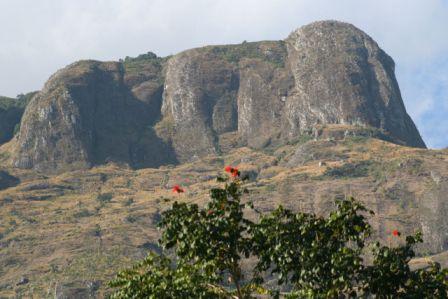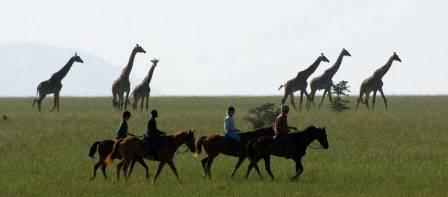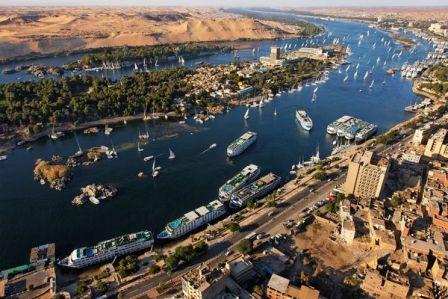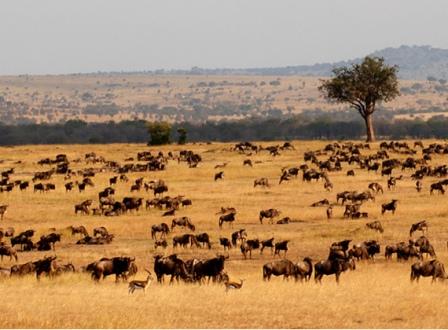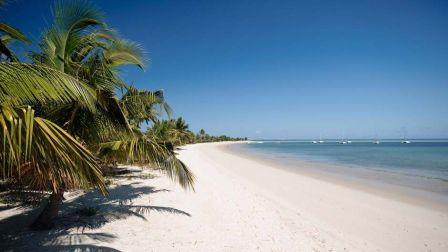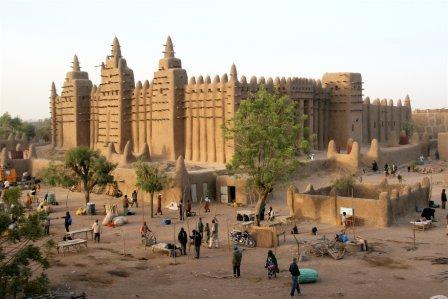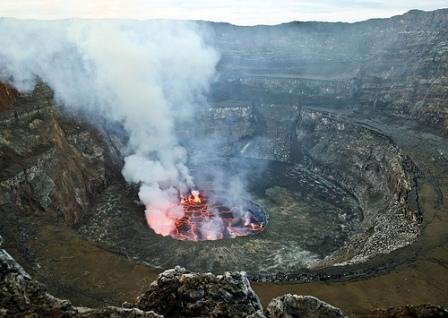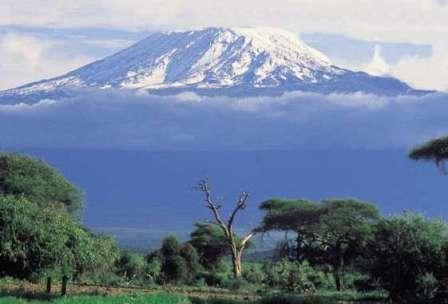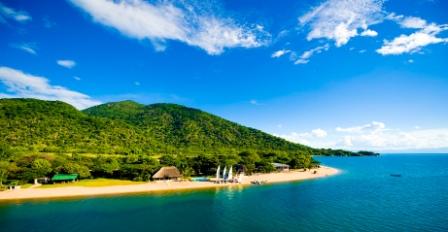The most incredible spots in Africa
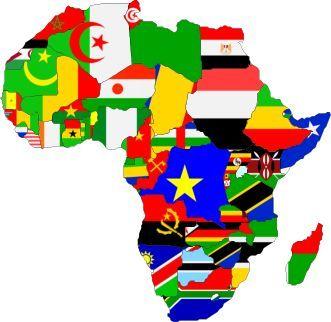
Without a doubt Africa has beautiful landscapes ever, from Algeria down to South Africa. Being the continent that is the world’s second-largest and second-most-populous continent its fact that Africa is the best. Up to the mountains and down to the valleys and river streams running throughout different countries, to most incredible and amazing creatures of this earth making lively hoods with in Africa.
Maasai Mara National Reserve – Kenya
Maasai Mara (Masai Mara) is known as one of Africa’s Greatest Wildlife Reserves, situated in southwest Kenya and is part of the northern section of the Serengeti National Park. Famous for the abundance of the big cats, Lion, Leopard, Cheetah and the Great Wildebeest Migration and the Maasai people, well known for their distinctive custom and dress.
Omo River Region – Ethiopia
The Omo River is an important river of southern Ethiopia. Its course is entirely contained within the boundaries of Ethiopia, and empties into Lake Turkana on the border with Kenya. It is the principal stream of an endorheic drainage basin; the part that the Omo drains includes part of the western Oromia Region and the middle of the Southern Nations, Nationalities, and People’s Region.
Mombasa- Kenya
Mombasa is the second-largest city in Kenya, with a population of over one million. regional cultural and economic hub, Mombasa has a large port and an international airport, and is an important regional tourism centre. Located on the east coast of Kenya, in Mombasa County and the former Coast Province, Mombasa’s bordering the Indian Ocean made it a historical trading centre, and it has been controlled by many countries because of its strategic location.
Table Mountain – South Africa
Table Mountain is a flat-topped mountain forming a prominent landmark overlooking the city of Cape Town in South Africa, and is featured in the Flag of Cape Town and other local government insignia. It is a significant tourist attraction, with many visitors using the cableway or hiking to the top. The mountain forms part of the Table Mountain National Park. The view from the top of Table Mountain has been described as one of the most epic views in Africa, and it’s officially one of the New7Wonders of Nature.
Djemaa el Fnaa – Morocco
Jamaa el Fna (Arabic: ساحة جامع الفناء jâmiʻ al-fanâʼ, also Jemaa el-Fnaa, Djema el-Fna or Djemaa el-Fnaa) is a square and market place in Marrakesh’s medina quarter (old city). It remains the main square of Marrakesh, used by locals and tourists. In the heart of the old city of Marrakech, snake-charmers, henna-painters, story-tellers, date-sellers and orange juice vendors set up their stalls in the sleepy heat of the afternoon.
Sossusvlei Dunes -Namibia
The sand dunes of Sossusvlei in the Namib Desert are often referred to as the highest dunes in the world. Various arguments are laid out to support this claim, but all miss the point, which is that Sossusvlei is surely one of the most spectacular sights in Namibia. Located in the Namib Naukluft park, the largest conservation area in Africa, and fourth largest in the world – the sand dunes at Sossusvlei are just one excellent reason to visit Namibia.
Mountain gorillas, Rwanda
The mountain gorilla is one of the two subspecies of the eastern gorilla. There are two populations. One is found in the Virunga volcanic mountains of Central Africa, within three National Parks: Mgahinga, in south-west Uganda; Volcanoes, in north-west Rwanda; and Virunga in the eastern Democratic Republic of Congo (DRC). The other is found in Uganda’s Bwindi Impenetrable National Park. Some primatologists say that the Bwindi population in Uganda may be a separate subspecies, though no description has been finished. As of November 2012, the estimated total number of mountain gorillas is 880.
Victoria Falls – Zambia and Zimbabwe
Victoria Falls (or Mosi-oa-Tunya (Tokaleya Tonga: the Smoke that Thunders) is a waterfall in southern Africa on the Zambezi River at the border of Zambia and Zimbabwe. While it is neither the highest nor the widest waterfall in the world, it is classified as the largest, based on its width of 1,708 metres (5,604 ft) and height of 108 metres (354 ft),resulting in the world’s largest sheet of falling water. Victoria Falls is roughly twice the height of North America’s Niagara Falls and well over twice the width of its Horseshoe Falls. In height and width Victoria Falls is rivalled only by Argentina and Brazil’s Iguazu Falls.
Spitzkoppe – Namibia
The Spitzkoppe (from German for “pointed dome”; also referred to as Spitzkop, Groot Spitzkop, or the “Matterhorn of Namibia”), is a group of bald granite peaks or bornhardts located between Usakos and Swakopmund in the Namib desert of Namibia. The granite is more than 700 million years old and the highest outcrop rises about 1,784 m (5,857 feet) above sea level. The peaks stand out dramatically from the flat surrounding plains. The highest peak is about 700m (2,300ft) above the floor of the desert below. A minor peak – the Little Spitzkoppe – lies nearby at an elevation of 1,584m (5,197ft) above sea level. Other prominences stretch out into a range known as the Pontok Mountains.
Sahara dunes – Morocco
Whether you’re running it or gawking at it, you’ll be impressed.The most user-friendly part of the Sahara is accessible from the northern edge of Morocco. You can trek with Berbers from the town of Zagoura, or camp out in Tazzarine where runners from all over the world complete the week-long Marathon des Sables every spring.
The foot of the Merzouga Dunes is the ultimate location for star-gazing, totally free of light pollution.
Pyramids of Giza -Egypt
And you thought building your garden wall was hard work.
The most famous of the structures at Giza, near Cairo, the Pyramid of King Cheops was built around 2650 BC from 2.5 million blocks of limestone.
Its sides are oriented exactly to the north, south, east and west.
The Chephren pyramid, built by Cheops’ son, is similar in size and incorporates the entrances to a burial chamber which still contains the large granite sarcophagus of King Chephren.
The pyramid of Mycerinus is smaller than both and all three are surrounded by other smaller pyramids and dozens of tombs.
Nyika Plateau National Park – Malawi
Nyika National Park lies in the northeast of Zambia, on the western edge of the Nyika Plateau, which is one of the highest parts of the country and most of which lies in neighbouring Malawi.
As a consequence of the colonial era when both countries were administered by Britain, a cross-border reserve was established on the plateau. After independence it was divided into the large Nyika National Park (Malawi) and the much smaller Nyika National Park (Zambia). The border between the two parks is the north-south plateau road, which is the only road access, and it starts and finishes in Malawi. Consequently Zambian visitors must enter Malawi to reach it (the nearest Malawian entry points are at Chisenga and Katumbi).
Makgadikgadi Pans – Botswana
The Makgadikgadi Pan is a large salt pan in the middle of the dry savanna of northeastern Botswana. It is one of the largest salt flats in the world. The pan is all that remains of the formerly enormous Lake Makgadikgadi, which once covered an area larger than Switzerland, but dried up several thousand years ago .
Draa Valley – Morocco
The pre-history of the valley of the Draa goes back thousands of years, as is evidenced by the many rock art engravings or petroglyphs in its surroundings and most of all by the find of the Venus of Tan-Tan. This statue is possibly the oldest human figurine ever found. It dates back more than three hundred thousand years. From all main periods of the prehistory of the Sahara rock-engravings and rock-paintings have been found. Foum Chenna (Tinzouline), Aït Ouaazik ( Asguine Tarna, Tazzarine) Tiouririne e Tisguinine (Zagora) are amongst the best known sites in the Draa region. At lghir N’tidri between Tagunit and Mhamid al-Ghizlane there is the necropolis of Foum Larjam. The necropolis is the largest of North Africa and consists of several kilometers of tumuli and dates back to prehistoric times. It is one of the few sites where not just rock-drawings but also rock-paintings were found. An extensive investigation into the precise date and origin of its (sedentary) inhabitants has yet to be made.
Mount Mulanje -Malawi
The Mulanje Massif, also known as Mount Mulanje, is a large monadnock in southern Malawi near the city of Blantyre, rising sharply from the surrounding plains of Chiradzulu, and the tea-growing Mulanje district. It measures approximately 13×16 miles (22×26 kilometres) and has a maximum elevation of 3,002 m at its highest point, Sapitwa Peak.
Much of the Massif consists of rolling grassland at elevations of 1800-2200 m, intersected by deep forested ravines. It has many individual peaks reaching heights of over 2500 m, including Chambe Peak, the West Face of which is the longest rock climb in Africa.
Riding safari -Kenya
Ride Kenya Horse Safaris is based on the Maasai-owned Mbirikani Group Ranch, comprising of 275,000 acres of wilderness between Amboseli and Tsavo National Parks and bordering Chyulu Hills National Park in southern Kenya. With traversing rights to over 1.5 million acres, Ride Kenya Mobile Horse Safaris boasts access to one of the most sought after expanses of Africa. With riding safaris that extend through an awe-inspiring range of ecosystems – from the elephant-filled swamps of Amboseli in the east, across vast savannahs dotted with plains game, to the majestic Chyulu Hills in the west – this is quintessential East Africa. This stunningly beautiful area is incredibly diverse, and often has spectacular views of Mount Kilimanjaro.
Wonders of the Nile – Egypt
The night is young, the Nile not so much.A cruise down the Egyptian Nile, ideally on a romantic felucca rather than a crowded tourist boat, reveals relics of one of the world’s most ancient civilisations.
The highpoint is the Valley of the Kings, with its monumental statues, and the magnificent Kom Ombo Temple, north of Aswan on the east bank.
Serengeti National Park- Tanzania
The Serengeti National Park is a Tanzanian national park in the Serengeti ecosystem in the Mara and Simiyu regions. It is famous for its annual migration of over 1.5 million white bearded (or brindled) wildebeest and 250,000 zebra and for its numerous Nile crocodile.
Flamingos – Kenya
If Hello Kitty was actually Hello Birdie.
Lake Nakuru National Park is home to one million resident flamingos, providing one of Kenya’s most unforgettable sights.
This lake has become famous for the greatest bird spectacle in the world, with swathes of vibrant pink filling the alkaline lake and the huge sky.
Lower Zambezi – Zambia
Even though the Lower Zambezi National Park covers an area of 4092 square kilometers, most of the game is concentrated along the valley floor. There is an escarpment along the northern end which acts as a physical barrier to most of the Park’s animal species. Enormous herds of elephant, some up to 100 strong, are often seen at the river’s edge. ‘Island hopping’ buffalo and waterbuck are common. The Park also hosts good populations of lion and leopard, and listen too for the ubiquitous cry of the fish eagle.
Bazaruto Archipelago – Mozambique
The Bazaruto Archipelago is a group of six islands in Mozambique, near the mainland city of Vilankulo. It comprises the islands of Bazaruto, Benguerra, Magaruque, Banque, Santa Carolina (also known as Paradise Island) and Shell.
The group belongs to the Vilankulo and Inhassoro districts of Inhambane Province.
The islands were formed from sand deposited by the Save River, which has since shifted its course. Tourist attractions include sandy beaches, coral reefs, and opportunities for surfing and fishing. The archipelago became a National Park in 1971. There is a wide abundance of reef fish, Surgeon, Moorish Idols, Parrot, Angel and Butterfly fish to name but a few. Giant Turtles, Game fish and Devil rays are regularly seen and the Dugong. All live free in this conservation paradise, proclaimed a National Park and recognised as a Gift to the Earth by the WWF
Djenne- Mali
The Great Mosque of Djenné is a large banco or adobe building that is considered by many architects to be one of the greatest achievements of the Sudano-Sahelian architectural style. The mosque is located in the city of Djenné, Mali, on the flood plain of the Bani River. The first mosque on the site was built around the 13th century, but the current structure dates from 1907. As well as being the centre of the community of Djenné, it is one of the most famous landmarks in Africa.
Fish River Canyon – Namibia
The Fish River Canyon or Fischfluss Canyon is located in the south of Namibia. It is the second largest canyon in the world and the largest in Africa, as well as the second most visited tourist attraction in Namibia. It features a gigantic ravine, in total about 100 miles (160 km) long, up to 27 km wide and in places almost 550 metres deep.
The Fish River is the longest interior river in Namibia. It cuts deep into the plateau which is today dry, stony and sparsely covered with hardy drought-resistant plants. The river flows intermittently, usually flooding in late summer; the rest of the year it becomes a chain of long narrow pools. At the lower end of the Fish River Canyon, the hot springs resort of Ai-Ais is situated.
Rhinos at Solio Reserve – Kenya
Solio Ranch or Solio Game Reserve is a privately owned wildlife conservancy located in Kenya’s Rift Valley Province.
The ranch is a fenced, privately owned protected area geared toward rhino conservation. The 17,500-acre reserve, 22 km north of Nyeri Town, plays a major part in the protection and breeding black rhinos in Kenya. The rhino is a member of the ‘Big-Five’, which are a key tourist attraction. Solio Ranch is recognised as one of the most successful private rhino breeding reserves in Kenya. The animals live in harmony with other wildlife, including the buffalo, zebra, giraffe and plains game such as eland, oryx, impala, waterbuck, Thompson’s gazelle and warthog. By the end of 2009, Kenya had 635 black rhinos and 353 white rhinos in various conservation areas around the country.
Nyiragongo Volcano, Virunga National Park – Eastern Congo
Virunga National Park is a 7800 square kilometer World Heritage Site that lies on the eastern border of the Democratic Republic of Congo. It is the oldest, most beautiful and most diverse national park on the African continent that and boasts savannas, lava plains, swamps, erosion valleys, forests, active volcanoes and the ice fields of the Rwenzori Mountains.
Kilimanjaro -Tanzania
Kilimanjaro, with its three volcanic cones, Kibo, Mawenzi, and Shira, is a dormant volcanic mountain in Kilimanjaro National Park, Kilimanjaro Region, Tanzania. It is the highest mountain in Tanzania, the highest mountain in Africa, and the highest free-standing mountain in the world at 5,895 metres or 19,341 feet above sea level (the Uhuru Peak/Kibo Peak).
Lake Malawi – Malawi
Lake Malawi (Lake Nyasa, or Lago Niassa in Mozambique), is an African Great Lake and the southernmost lake in the East African Rift system, located between Malawi, Mozambique and Tanzania. The third largest and second deepest lake in Africa, it is also the ninth largest in the world. It is reportedly the habitat of more species of fish than any other body of freshwater, including more than 1000 species of cichlids, and was officially declared a reserve by the Government of Mozambique on June 10, 2011.


